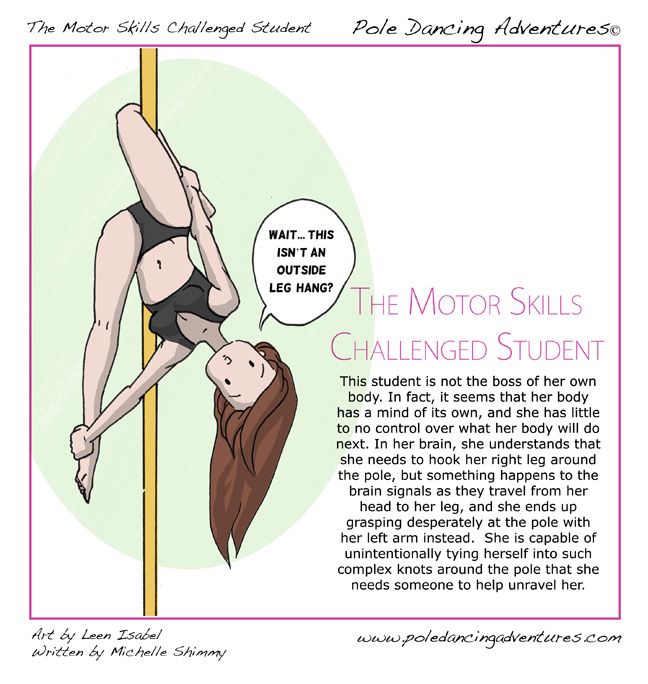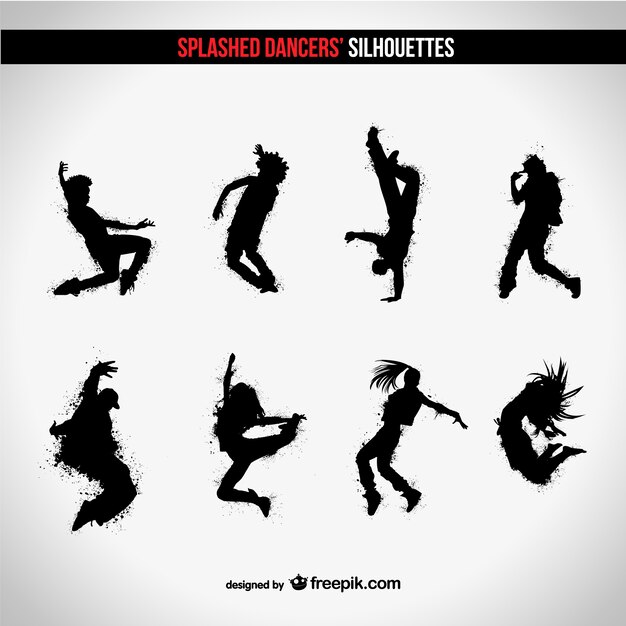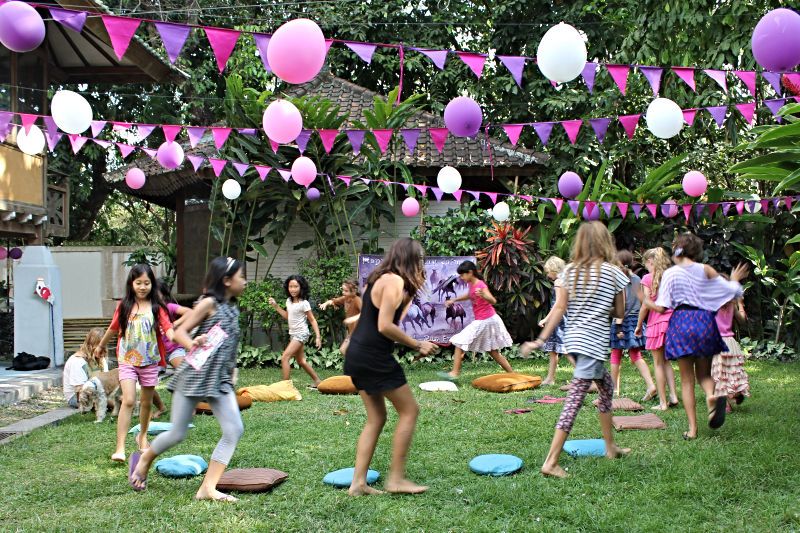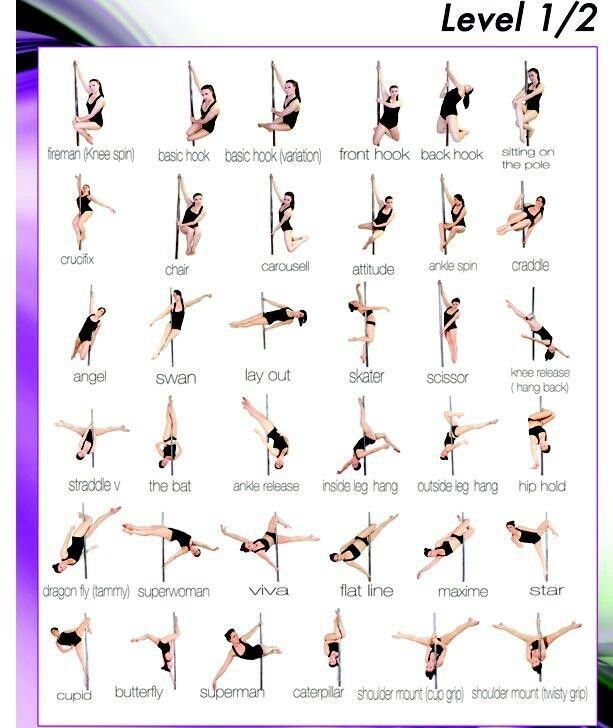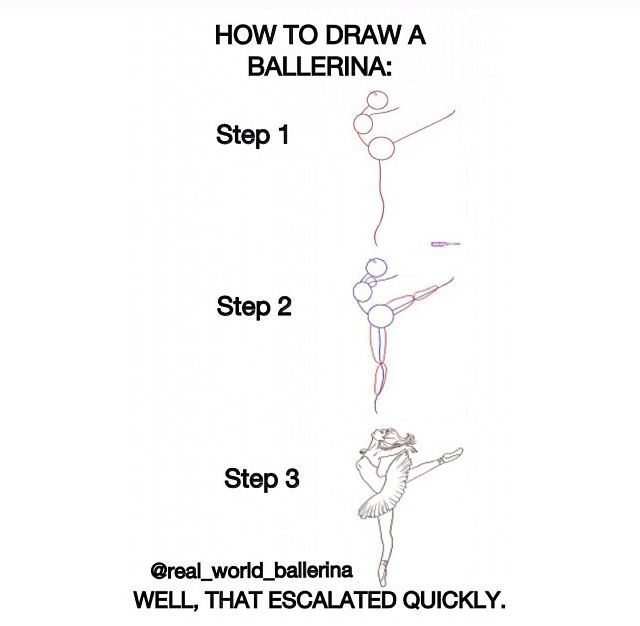How much space do you need for a dance pole
Buying a Pole for Home Use — Brass Butterflies
Originally written and posted December 14, 2016. Updated and re-posted January 2021.
Are you considering buying a pole to use at home? Not sure where to start? Here are some commonly asked questions and their answers to help you decide.
Above: Heather Poulin posing on a stage pole, outdoors. Photo by Alexa Baker Photography
First though, who am I and why should you take my advice on buying a pole? My name is Heather, and I’m the owner of Brass Butterflies Pole and Aerial Studio in Waterloo, Ontario, Canada. I started taking pole dancing lessons in 2010, became an instructor in 2011 and purchased my own studio at the end of 2012. I purchased my first pole for use at home after I had been taking lessons for just a few months. I wanted to be able to practice at home, in between my weekly classes. I did a lot of research at the time, and the first pole that I purchased for home use was an X-pole. When I became a studio owner, I became an authorized Dealer for X-pole and sold X-pole exclusively for almost 8 years. Unfortunately, in 2020, X-pole discontinued their Canadian Dealer program due to COVID-19 supply restrictions, so Brass Butterflies is no longer an X-pole authorized dealer.
This blog post in its original form dealt solely with X-pole. While I do still recommend X-pole as a reputable manufacturer of safe home poling equipment, after researching and trying some other company’s home pole products, I also highly recommend Lupit Pole for safety and quality, and if you want to buy local, I recommend checking out FitBar Pole out of Quebec. Brass Butterflies became a Lupit Pole Studio Affiliate in 2020.
Photo source https://lupitpoleusa.com/
Photo source https://www.fitbarpole.com/products/pole-rose
Frequently Asked Questions and Considerations When Buying a Pole For Home Use
Are the poles removable/portable?Almost all reputable at home pole manufacturers offer a removable/portable line of poles that are installed using pressure.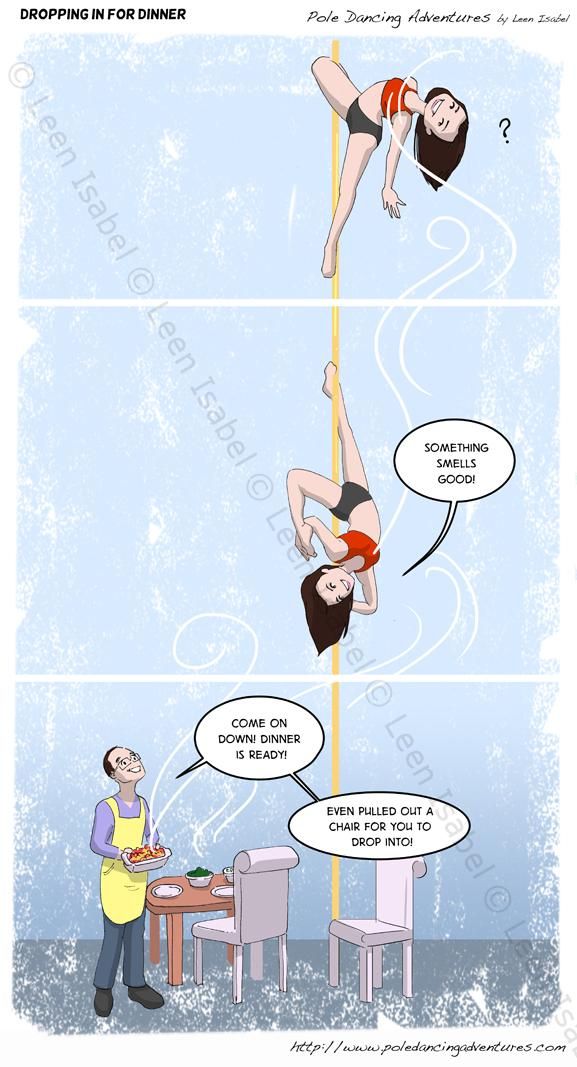 They have patented mechanisms that you twist to increase the upward/downward pressure when installing, which then gets locked/covered and is independent of the pole surface so that you don't have to worry about it "unscrewing" if you spin in a specific direction. Some of the cheaper, novelty poles have this issue. Some removable pole models disassemble into several pieces and extensions which makes them very height adjustable. Some are ordered as one solid piece so the range of heights you can use your pole in is more limited. Removable poles typically come with a carrying case and they are definitely removable and portable. Depending on model and material, the average weight range is between 15-20 kg. Again, depending on manufacturer and model, they can typically be assembled and installed by one person in about 15 - 20 minutes with minimal tools.
They have patented mechanisms that you twist to increase the upward/downward pressure when installing, which then gets locked/covered and is independent of the pole surface so that you don't have to worry about it "unscrewing" if you spin in a specific direction. Some of the cheaper, novelty poles have this issue. Some removable pole models disassemble into several pieces and extensions which makes them very height adjustable. Some are ordered as one solid piece so the range of heights you can use your pole in is more limited. Removable poles typically come with a carrying case and they are definitely removable and portable. Depending on model and material, the average weight range is between 15-20 kg. Again, depending on manufacturer and model, they can typically be assembled and installed by one person in about 15 - 20 minutes with minimal tools.
Photo source https://www.x-pole.ca/
What material should I choose?There are several different materials available for poles. The most common in Canada are Brass and Chrome. Stainless Steel and Powder Coated are slightly less common but have been gaining in popularity in recent years. Other finishes that you can find home poles in are Titanium Gold (electronically coated finish exclusive to X-pole) and silicone.
The most common in Canada are Brass and Chrome. Stainless Steel and Powder Coated are slightly less common but have been gaining in popularity in recent years. Other finishes that you can find home poles in are Titanium Gold (electronically coated finish exclusive to X-pole) and silicone.
Chrome - Standard grip. Industry standard for competitions and showcases. Students who are used to brass will generally find chrome "slippery" but will eventually get used to it. People with contact allergies to metals such as nickel may react to chrome depending on length of exposure and severity of allergy.
Brass - High grip. Common in studios (in Canada). More expensive.
Titanium Gold - Exclusive to X-pole. Electronically coated to enhance grip to somewhere between chrome and brass. Aesthetically looks more like brass (yellow/gold colour). Mid-priced. Coating will eventually wear off with extensive use to reveal chrome beneath.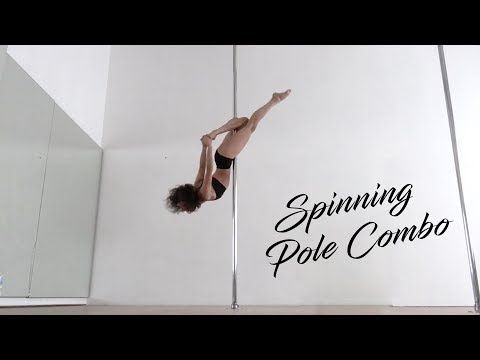
Stainless Steel - Grip similar to chrome. Best for sensitive skin. Will not tarnish in humid climates.
Powder Coated - Painted surface similar to automotive paint or the paint on playground play structures. Also better for sensitive skin or those with metal allergies. Very high grip (could be too much for students learning spins on static poles).
Silicone covered - Maximum grip/cannot spin on static mode or slide down. Can be gripped while wearing clothing. Similar to Chinese Pole.
Poles can be purchased in different diameters. 45mm is the industry standard now, used for most competitions and showcases, especially in North America. Standards in studios will vary regionally. Thicker poles (48-50mm) will be more challenging for students when learning spins and tricks requiring hand grip, however they may make sitting and tricks that involve hanging from the legs easier/more comfortable.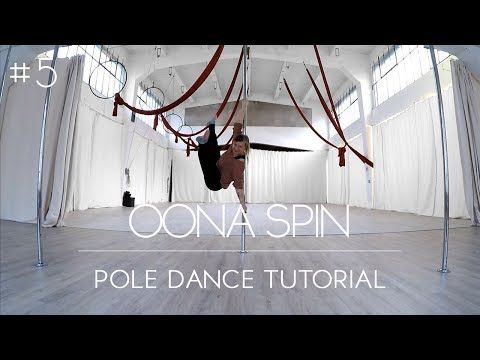 Skinnier poles (38-40mm) are the opposite. They are easier to grip with hands for the beginner but may make sitting and leg tricks more painful or harder to learn. This is why 45 mm seems to have been chosen as the "happy medium" standard for the industry. Students with larger hands/longer fingers or smaller than average hands, may want to opt for a larger or smaller pole diameter but I recommend sticking to 45mm for most students.
Skinnier poles (38-40mm) are the opposite. They are easier to grip with hands for the beginner but may make sitting and leg tricks more painful or harder to learn. This is why 45 mm seems to have been chosen as the "happy medium" standard for the industry. Students with larger hands/longer fingers or smaller than average hands, may want to opt for a larger or smaller pole diameter but I recommend sticking to 45mm for most students.
You should be able to swing your body out from your pole without danger of kicking a wall or furniture. A good rule of thumb is minimum 5.5' from a wall or solid object and at least 7.5' between two poles. If you are very tall/long limbed, you may want a bit more space.
How much height do I need?The average residential ceiling height will range from 7.5 - 9’. Any shorter than 7.5’ will make learning challenging as even the most basic spins require the height of an arm extended straight overhead.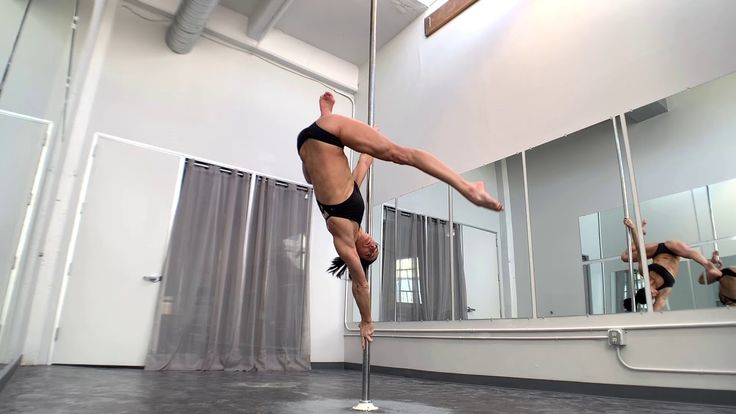 You can learn and practice with standard 8’ ceilings, but 9-11’ is the sweet spot range that allows room for climbing and aerial inversions. Standard X-pole (Xpert, Pro or Sport) and Lupit G2 Home pole basic kits come with extension pieces to allow installation with ceiling heights ranging from 7.5 - 9'. Additional extensions can be purchased to extend poles up to 12' for brass or 14' for chrome. Anything higher than this will multi-piece removable poles have too much sway/give and could be dangerous. If you have ceilings that are higher than 14’, you will want to purchase a custom, one-piece studio grade pole and should contact your local studio or the manufacturer directly for help before ordering.
You can learn and practice with standard 8’ ceilings, but 9-11’ is the sweet spot range that allows room for climbing and aerial inversions. Standard X-pole (Xpert, Pro or Sport) and Lupit G2 Home pole basic kits come with extension pieces to allow installation with ceiling heights ranging from 7.5 - 9'. Additional extensions can be purchased to extend poles up to 12' for brass or 14' for chrome. Anything higher than this will multi-piece removable poles have too much sway/give and could be dangerous. If you have ceilings that are higher than 14’, you will want to purchase a custom, one-piece studio grade pole and should contact your local studio or the manufacturer directly for help before ordering.
Most new generation home poles contain bearings which, when "unlocked" or set to spin mode, allow the pole itself to spin in place. Spin pole is an integral part of competition and showcasing, however it is not usually introduced to students in North America until they are beyond an introductory level.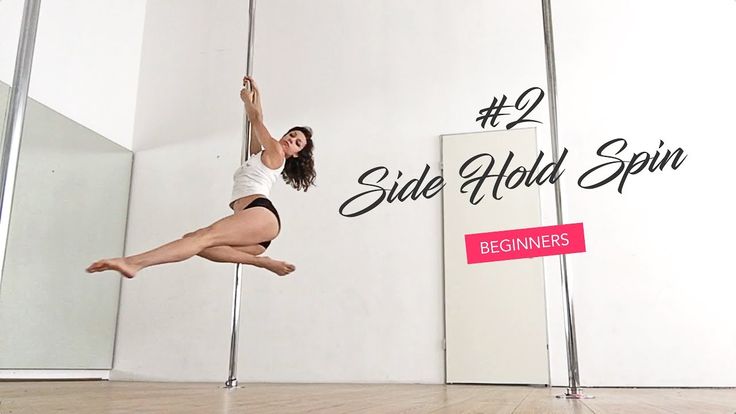 Spin pole, for the most part, is actually more difficult and requires more strength than static pole. However, investing in a pole that will eventually be able to be used in both static and spin mode is a good idea, even for a beginner, if they think they will eventually want to learn spin pole, so that they won't need to sell and upgrade their pole later, which may cost more in the long run.
Spin pole, for the most part, is actually more difficult and requires more strength than static pole. However, investing in a pole that will eventually be able to be used in both static and spin mode is a good idea, even for a beginner, if they think they will eventually want to learn spin pole, so that they won't need to sell and upgrade their pole later, which may cost more in the long run.
Because most standard home pole models are installed using pressure, you do not have to drill into the ceiling or floor. The dome or plate at the top and the foot of the pole have silicone pads that prevent slipping and marking. You can get permanent block mounts which would screw into the ceiling for added stability and security, however these are typically unnecessary for home use, unless you have vaulted ceilings. You will need a stud finder when installing your pole so you can centre the dome on one or two ceiling joists, depending on your ceiling construction. This is an important step to prevent uneven pressure from causing damage. If you have a "popcorn" stucco ceiling, the top dome/plate may leave a faint ring in the pattern of the stucco.
You will need a stud finder when installing your pole so you can centre the dome on one or two ceiling joists, depending on your ceiling construction. This is an important step to prevent uneven pressure from causing damage. If you have a "popcorn" stucco ceiling, the top dome/plate may leave a faint ring in the pattern of the stucco.
Both Lupit and X-pole sell special mounts for vaulted ceilings. These do have to be screwed into the ceiling.
What if my ceilings aren't finished?You will likely need to affix a piece of plywood across your joists and mount your pole to that.
What if I have carpet in the area where I want to install my pole? What if I have a cement floor?Removable poles can be installed on wall to wall carpet. You have to make sure to install tightly, and it will compress the carpet and leave a "dent" similar to if you placed a heavy piece of furniture on your carpet. You will want to consider that pole dancing often has you dragging toes or feet on the floor or landing on your knees so you'll need to be careful of carpet burn. The same thing if you have an unfinished cement floor; this could be very hard on your feet/knees.
You will want to consider that pole dancing often has you dragging toes or feet on the floor or landing on your knees so you'll need to be careful of carpet burn. The same thing if you have an unfinished cement floor; this could be very hard on your feet/knees.
WARNING. DO NOT place a loose mat or area rug under your pole. This compromises safety as the material could slip with lateral force, even if it's "non slip" material, and the base of your pole could "kick out".
Stage Poles
Another possible option for home use, other than a removable or a permanently mounted pole, is a stage pole. Stage poles are freestanding poles that have a weighted base to support them so they don’t tip. They are not attached to anything at the top. Stage poles provide ultimate portability for performers and photographers that want to set up in spaces where they can’t set up a removable pole due to ceiling limitations (or absence). This might be a good solution for pole students who can’t install a pole in their homes for various reasons.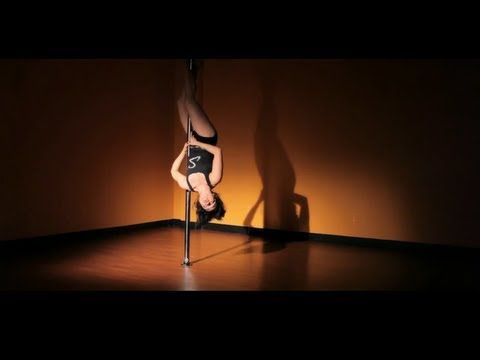 However, there are several downsides to stage poles that you should consider before deciding to purchase one for recreational use.
However, there are several downsides to stage poles that you should consider before deciding to purchase one for recreational use.
Stage poles typically require more height. The dance surface of the base will be raised anywhere form 2 - 12” and the standard kit for most stage poles require 10 - 10.5’ clearance. They can be used with shorter ceilings but you would have to purchase additional extension pieces to adapt them. They are not as stable as attached poles and can feel “wobbly”; you have to be very careful doing “power” moves (big spins and release moves that put serious lateral forces on the pole). They are very heavy and, although they are technically portable, they are not easy to move. They have to have heavy bases for stability. They are expensive. Compared to your average removable home pole, a stage pole will cost you, on average, twice as much. You’re looking at approximately $1,000 CAD to get a new, quality stage pole.
Jess and Jenya using our X-stage Lite at our outdoor urban pole photoshoot, used with permission. Image by Alexa Baker Photography.
Image by Alexa Baker Photography.
Brass Butterflies is a Lupit Pole studio affiliate. If you purchase from https://lupitpole.com/ use the code BrassButterflies5 at checkout to receive a 5% discount on your purchase.
Buy a Pole From Lupit Pole (Use code Brassbutterflies5 for 5% off)
Notes on SafetyDo I need a crash mat?It's a good idea to have a crash mat if you will be practicing inversions or high climbs. It is also a good idea to always have a buddy nearby when you are poling. One who is trained to spot you properly is even better, but beware of untrained spotters. They could cause injury to you and themselves rather than preventing it.
You can buy crash mats specifically made for installing around the base of a pole from various sources. I bought my studio crash mats from a couple of different sources: http://www.yogaaccessories.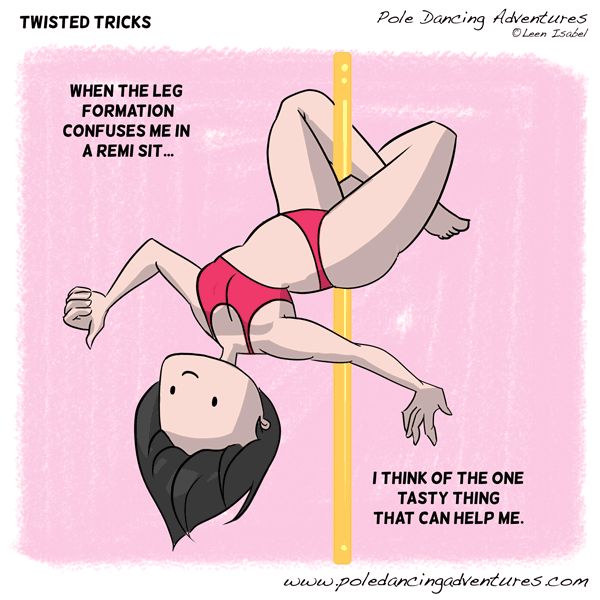 com/Pole-Crash-Mats_p_125266.html and https://www.sportsystemscanada.com/products/padding-mats/gym-mats/pole-crash-mats.html
com/Pole-Crash-Mats_p_125266.html and https://www.sportsystemscanada.com/products/padding-mats/gym-mats/pole-crash-mats.html
Lupit Pole also sells crash mats. (use code BrassButterflies5 at checkout to get 5% discount)
What are the best/safest ways to learn if you pole at home and don't attend lessons at a studio?Pole dancing is a sport/art similar to other forms of dance or gymnastics and is progressive in nature, meaning you need to learn foundational skills then layer progressively more difficult skills on top of these. It is really best learned from an expert who is experienced and trained in safety and proper teaching techniques. Being a good pole dancer does not make someone a good teacher. So, along these lines, if attending a reputable studio with experienced instructors is not an option available to you, it is best to use a reputable source for online video lessons.
Live Online Lessons: With the start of the COVID-19 pandemic, many more studios have begun offering live online lessons through ZOOM or similar platforms, Brass Butterflies included! The benefit of a live online class is that you get real time feedback from a teacher who is able to watch you and provide tips and corrections on form.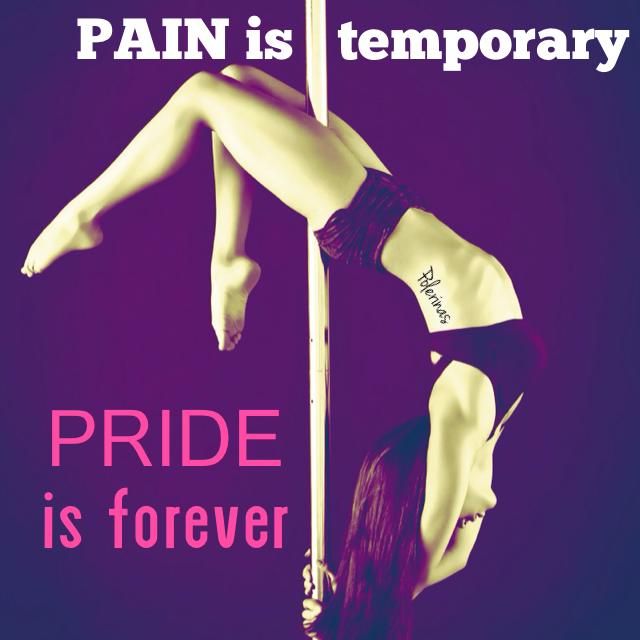 If you can’t be in person with an instructor, this is the next best thing and it’s worth paying for.
If you can’t be in person with an instructor, this is the next best thing and it’s worth paying for.
Register for Online Pole Classes Now
On Demand Online Lessons: For on demand videos, please resist the temptation to use random YouTube or Instagram videos to teach yourself on the pole. Watching these videos is great for inspiration and motivation. Absolutely follow your favourite pole stars and fellow students alike. However, you should use the same criteria for choosing online lessons as you would for choosing a studio. Usually, to get good quality, you will have to pay a subscription fee, but not necessarily. The rule of thumb though is, you get what you pay for. Research the background, training and experience of the person or organization making the videos. Here are a few sources I've used in the past and know are reputable. This is not an exhaustive list. Brass Butterflies is currently working on our very own online, on demand video library. Follow us on social media or sign up for our email list to stay informed when we launch.
Follow us on social media or sign up for our email list to stay informed when we launch.
Studio Veena http://studioveena.com
Tantra Tutorials http://www.tantratutorials.com/
Open Dance Academy https://www.opendance.academy/
Canadian Pole Fitness Association Online Academy https://canadianpolefitnessassociation.com/cpfa-online-academy/
Home Poling, MerchandiseHeather PoulinBrass Butterflieshome poling, learn at home, pole dancing, online pole lessons, buy a pole for home, buy a pole
0 LikesHow Much Room Do You Need for Pole Dancing?
You are thinking of purchasing a pole to practice at home, but you are not sure how much space you’ll need to comfortably train? Or you may be among those who don’t own large apartments or houses to have free spaces for pole dancing. Worry not, because this post is for you. Here, we will not only tackle this question but also give you tips on things to consider when pole dancing in smaller spaces.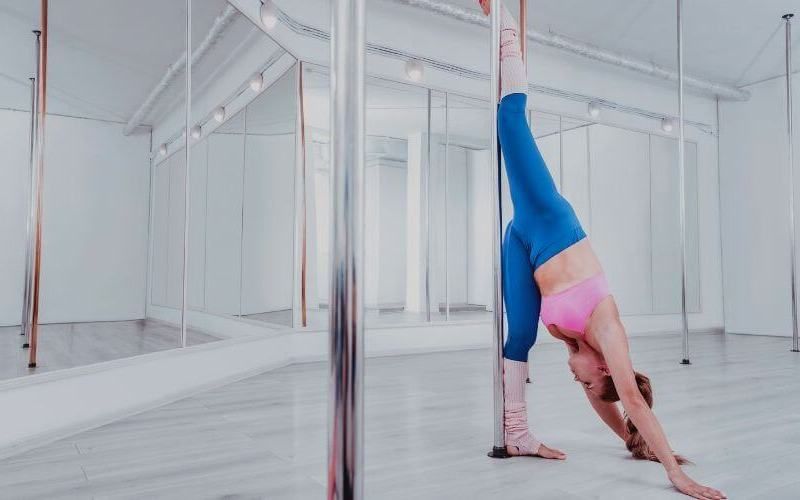
Let’s begin…
How Much Space is Enough?
X–Pole recommends at least 3 meters diameter of clearance, that is, 1.5 meters (4′ 11) away from the pole in all directions. I suggest that considering your height, an ideal space is one where you can swing yourself out from the pole without hitting any object in your vicinity. That should be an average of 5.5 feet radius.
Tip: Walk around the pole with both hands extended. The radius should be at least your arms span.
With that said, you are probably wondering ” is it possible to pole dance in a smaller than ideal space?” Absolutely. Putting in place a few compromises, you can certainly workaround to make the most out of your tiny room.
Trending
5 Best Pole Dance Crash Mats For Home Or Studio Use
Pole Dancing in a Tight Space
Below are a few tips you can use to hack practicing in a limited space.
Get a Suitable Pole
To choose an appropriate pole, evaluate the horizontal and vertical spaces of your room.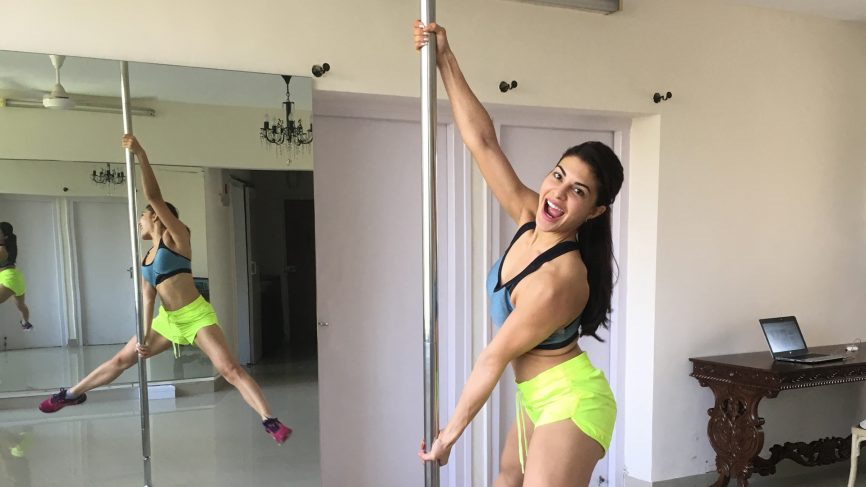 For smaller spaces, it is advisable to get poles that you can remove whenever you are done practicing. These poles can either be mounted or free standing.
For smaller spaces, it is advisable to get poles that you can remove whenever you are done practicing. These poles can either be mounted or free standing.
Mounted poles are suitable for small horizontal spaces with average to very high ceilings as they can be adjusted by adding extensions. Freestanding poles, on the other hand, are suitable for rooms with low ceilings but bigger horizontal space as their bases take up more space. They are also suitable to use in your backyard even though they are a bit heavy to move.
Move that furniture!
Before any workout session, you can rearrange the room temporarily to create enough space to spin. Move furniture to the edges of the room, remove any wall hangings around the dancing area, and the light fittings on the ceiling to avoid kicking during practice.
Alternatively, you can get rid of some furniture or replace them with smaller pieces. I know of a pole dancer who replaced her queen-sized bed with one of those rollaway beds. Think of getting rid of that coffee table you rarely use and having that space for your pole. No?
Think of getting rid of that coffee table you rarely use and having that space for your pole. No?
Be Creative
One good thing about poling in unideal spaces is that it brings out some creativity in you. As much as you can’t bust all the pole tricks, lifts, and spins, you can always modify some moves, creating your own variations to accommodate the limited space.
There is, however, a vast array of tricks you can pull including; climbs, handspring, Iguana, base butterfly, back and front hook spins, hand and headstands among others. You can also do pole conditioning, strength building, and fitness-based moves within your tiny room.
Be careful
Finally, as you get on that pole, be cautious of the space. Be careful not to smash your foot onto a wall as you perform a spin. Start slowly, taking note of the perimeters as you modify moves. With time you’ll be subconsciously alert and more controlled.
Follow these safety precautions of pole dancing because it is better to be safe than sorry.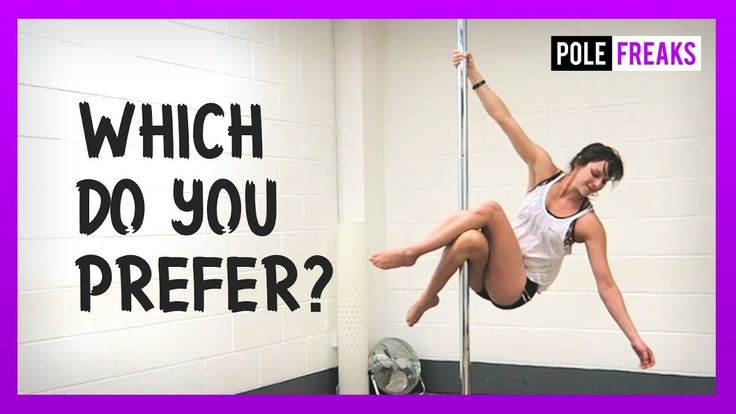
Conclusion
Even though a larger space is favorable for pole dancing, having a smaller space is way better than no space at all. So however tiny your room is, find a way to work around it. There are plenty of tricks and spins you can do. Use the tips we’ve provided here to get started and remember safety first. Happy dancing!
How to get started in pole dance
Irina Malchukova
opened a pole dance studio
Author profile
I taught pole dance for six years, five of which I ran my own pole dance studio.
To do this, I completed two special courses and participated in several master classes, my productions won prizes in regional competitions more than once.
I'll tell you how to start practicing for a beginner, what to buy, why half-dance can replace fitness and how to choose the right pole dancing studio. nine0003
What is pole dance
Pole dance is a pole dance that combines elements of choreography, gymnastics and acrobatics. In fact, this is a general concept. Now there are several directions that differ from each other: Exotic Pole Dance, Pole Art and Pole Sport. I will tell about them further.
In fact, this is a general concept. Now there are several directions that differ from each other: Exotic Pole Dance, Pole Art and Pole Sport. I will tell about them further.
Pylon, or pole, a polished metal tube for grasping with hands and clutching with legs or other parts of the body. Its diameter can be 40, 42 and 44 mm.
/motivation-sports/
Work out with a trainer and try different activities: 7 tips to love the sport
Usually made of stainless steel, this ensures a smooth glide and at the same time a good grip on the skin. Pole dancers don't like it when a pole is called a pole.
There are static poles - about tricks that are performed on such a pole, they say "in static", and also rotating ones - dancers say "in dynamics". In what follows, I will use these terms. nine0003
Most often, poles in professional studios have two modes at once. Due to simple manipulation, "dynamics" turns into "statics". In competition, dancers must be able to do tricks on both static and rotating pylons.
Pylons are fixed in different ways:
- Widespread between floor and ceiling.
- With one fixed fixing to the floor or ceiling only. nine0036
- Two fixed fasteners at once. This option is the most reliable.
One fixed mount in studios is also acceptable. If the pole is installed only at a distance in a dance school, I do not recommend doing complex tricks there or spinning strongly.
There are also portable pylons - these are structures that can be transported with you or quickly assembled on site. Usually they are used for performances, since it is not safe for students to study on them in a constant stream. nine0003 Pylon supports that are fixed to the floor and ceiling. Source: Pilonexpert Portable pylon. Source: thepole.eu
elements are called tricks that are done on a pole. There are several levels of the pylon where they are performed:
There are several levels of the pylon where they are performed:
- Upper - acrobatic stunts are performed here at a height of more than two meters above the floor.
- Medium - perform rotations, plastic or dynamic elements at a height of 1-1.5 meters above the floor.
- The lower one is the stalls. Usually this is plastic or acrobatics, which is performed both with and without a pylon. nine0036
In 2021, pole sport was officially recognized in Russia. This means that the Ministry of Sports of the Russian Federation will coordinate all the rules by which half-dance competitions are held, there will be sports categories for participants, judges will have to undergo certification, and half-dance federations will have to be accredited.
Order of the Ministry of Sports of the Russian Federation, in which half-dance was included in the register of sports
Dance schools offer half-dance classes not as a sports discipline, but as exercises for stretching, working out the muscles of the legs and arms. nine0003
nine0003
| These are elements on the pylon, or tricks |
Half-dance directions
Pole Sport or FitnessIn this direction, most of the time is devoted to trick and power elements on the pylon. There are about 70% of tricks in the performance, and 30% of the choreographic or parterre part. To simplify, half-sport is similar to gymnastics.
Competitions are often held in this direction. Mandatory elements are defined for them - those that a dancer must be able to do and show at the competition. Each element is evaluated by points: they look at the purity of execution, clarity of lines, and other criteria. Sometimes there are restrictions on touching the floor during a performance. nine0003 Pole-sport is most similar to artistic gymnastics
Pole dance directions
Exotic Pole Dance This is a dance direction where the emphasis is on choreography, plasticity and musicality. Exotic is danced in special shoes - strips, they have a high platform and heels. This is the most feminine direction. If compared with others, we can say that exotic is strip plastic with a pylon, where there is a trick part.
Exotic is danced in special shoes - strips, they have a high platform and heels. This is the most feminine direction. If compared with others, we can say that exotic is strip plastic with a pylon, where there is a trick part.
Important: in exotic pol-dance one does not completely undress. You can take off some item of clothing in the room - gloves, a neckerchief, ears from your head. But it is forbidden to expose the genitals or breasts. nine0003 This is what special shoes for exotics look like - strips. Photographer: Sergey Patrushev
Exotic pole dance is also divided into several types.
Exotic Flow features smooth and slow movements. The ratio of tricks and choreography is about 20/80. It does not require complex elements, but acrobatic stunts are more like dance accents. The main thing in this type of dance is the choreography at the pylon and the parterre technique at the very bottom.
Smooth slow dancing exotic flow Exotic Hard - more energetic and sharp dance.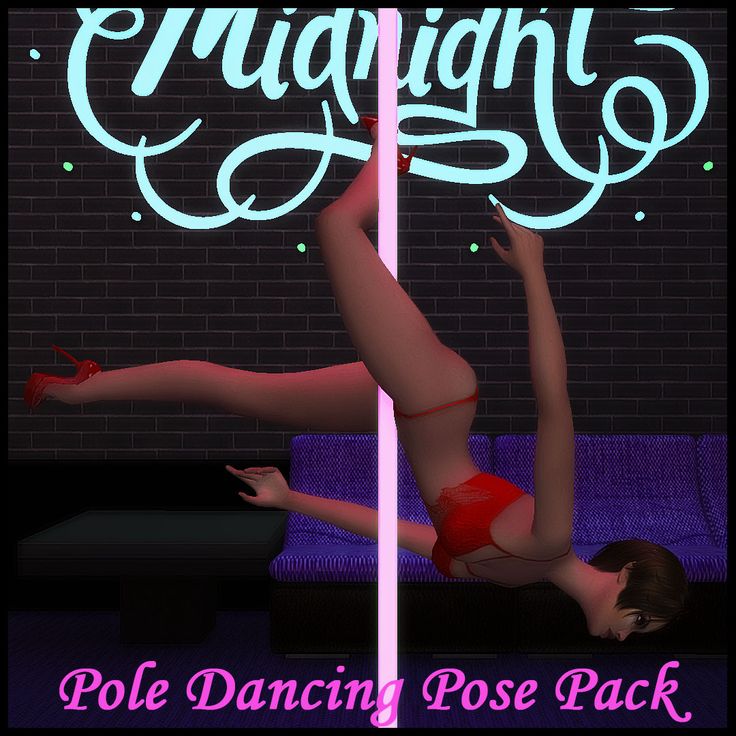 The ratio of trick and choreographic parts is 70/30.
The ratio of trick and choreographic parts is 70/30.
The main thing here is the ability to perform acrobatic elements on the pole in strips. The image and idea of the dance are also important.
Energetic exotic hardOld School is the most sensual and feminine direction. The ratio of tricks and choreography is 40/60.
Particular attention is paid to musicality, dance elements, and tricks are chosen as smooth as possible. nine0003 Sensual old school direction
Pole dance direction
Pole Art This is a harmonious combination of power elements and choreography, that is, 50% dances, 50% tricks. Artistry and presentation are important here. For example, sometimes they dance a modern stage dance, only with a pylon. At pol-art competitions, revealing and defiant clothing, sexual movements are prohibited.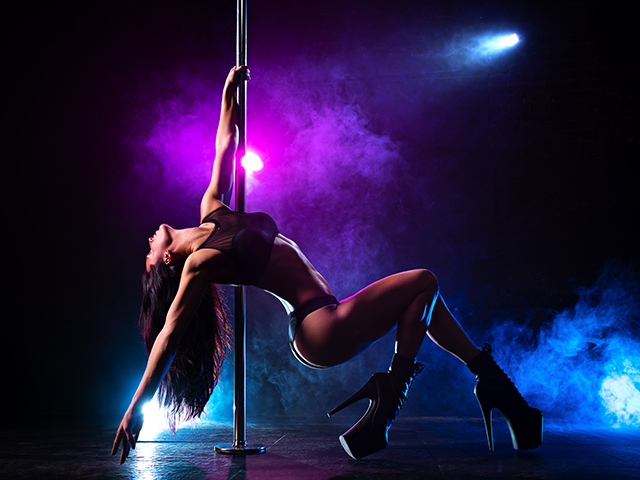
The main difference between half-art and exotic is that it is not a seductive dance that shows sensuality and femininity. Half-art is danced not in strips, but barefoot or in special shoes, the clothes are strict, not sexy, there are no playful movements or coquetry with the audience. If in exotic the task is to seduce the viewer, then in half-art it is to tell a story, show the emotions and experiences of the hero. nine0003
All directions of half-dance are intertwined with each other. It will not be possible to dance exotic or art without tricks, so the basic elements of half-sport will have to be mastered. At the same time, staging a half-sport number will not do without choreography.
I recommend combining two directions: trick part and dance part.
Pole art is reminiscent of stage dancingHow pole dance can be useful
Half dance seems to be easy because the dancers' movements are light. In fact, you need endurance, flexibility, coordination. nine0003
In fact, you need endurance, flexibility, coordination. nine0003
Calorie consumption calculator for half-dance classes
One session actually replaces a circuit training, where exercises for different muscle groups are repeated several times - the same number of calories can be spent.
In addition, pole exercises train the skill of controlling the whole body. You need to be able to keep yourself on your hands, on your feet, to maintain balance in static. Different muscles work, over time the body becomes toned. Due to twists on a rotating pylon, the vestibular apparatus is trained. nine0003
Abs and back. Many tricks must be done statically. For example, handstands. In this case, all the stabilizing muscles are involved, the press and back work, the ligaments are strengthened, strong core muscles are formed.
/list/sports-myths/
“We need to close the carbohydrate window” and 9 more common myths about sports and health
Upper body.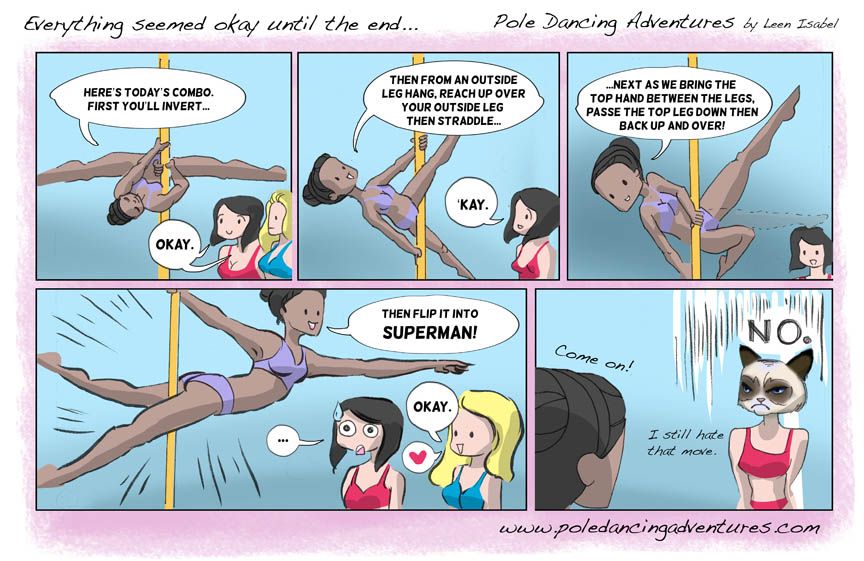 Use your hands to climb the pylon and hold your own weight. Shoulders, biceps and triceps, pectoralis major and other chest muscles, upper back work. nine0003
Use your hands to climb the pylon and hold your own weight. Shoulders, biceps and triceps, pectoralis major and other chest muscles, upper back work. nine0003
Lower body also works. For example, there are hangings on the legs - if you do not strain your leg muscles, you can fall off the pylon. Body weight must be maintained with the help of the muscles of the thigh and calves, gluteal muscles. Some entry-level twists work the upper thighs, glutes, and lower back at the same time.
Stretch - there are beautiful elements that require stretching the legs and a flexible back. I recommend attending stretching classes separately. If this is not possible, performing tricks on the pylon will eventually develop plasticity anyway. nine0003
In addition, tricks must be constantly practiced - this requires stamina.
I will also note: many people gain self-confidence, because each mastered trick is a small victory.
Who suits half-dance
The most difficult thing is to decide to come to the first lesson.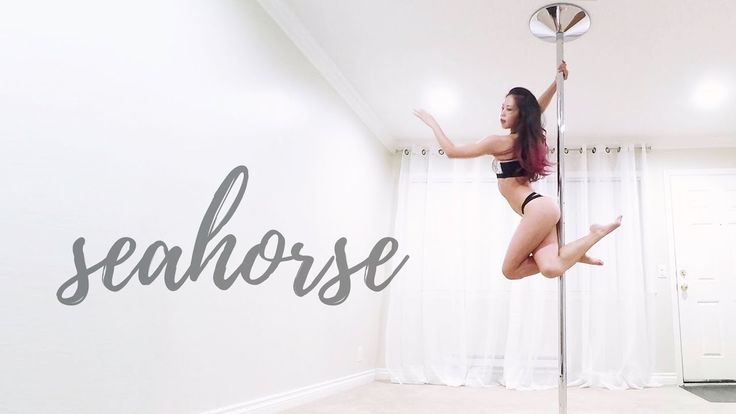 Popular newbie fears:
Popular newbie fears:
- I can't do it;
- everyone already knows how, but I don't know anything;
- I don't have enough strength, I won't lift myself onto the pylon;
- I don't have the ear to dance;
- I am overweight;
- everyone has splits, but I don't have a stretch.
In fact, everything is not so difficult. You can start from scratch without any preparation.
/fitness/
How to save money on sports
Even if a person was a professional athlete or dancer, he too may fail at the first training session. And this is absolutely normal, because pole exercises are a special load: the work of the whole body, coordination, grip due to the skin. nine0003
Usually students are divided into groups of beginners and those who have been studying for a long time. This is done for convenience: everyone works out the same tricks, can see each other's mistakes or direct a neighbor on the pylon in the right direction.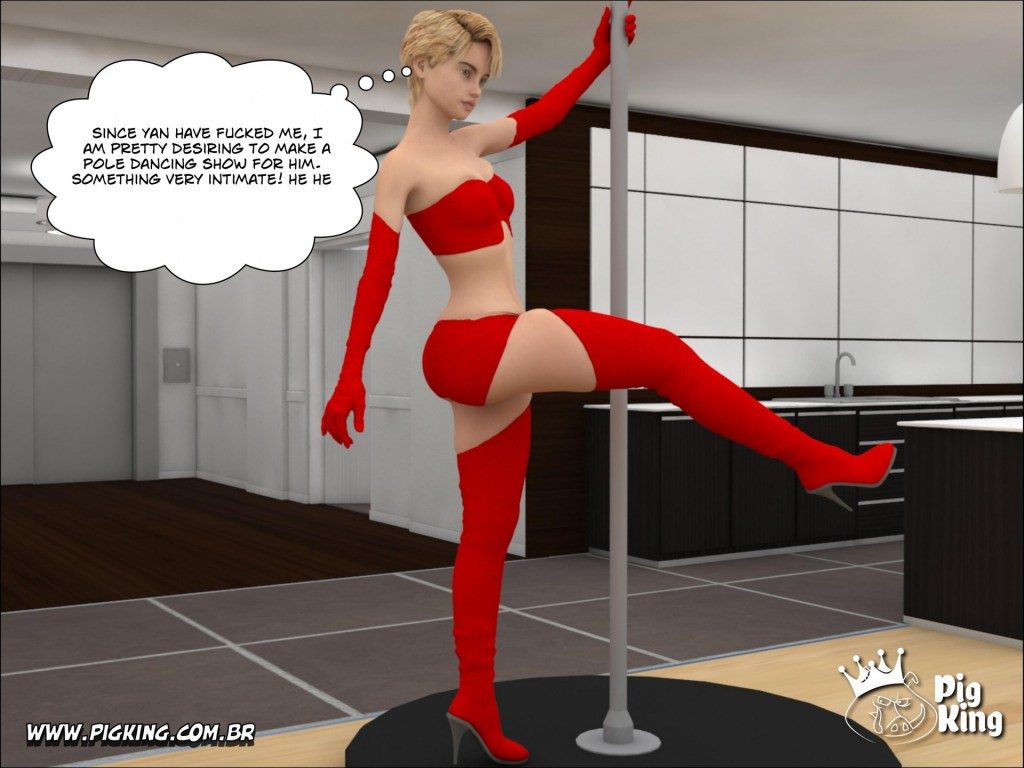 Beginners can safely join groups of beginners: they are not far behind in the program and will quickly catch up with their level.
Beginners can safely join groups of beginners: they are not far behind in the program and will quickly catch up with their level.
I note that the pole is an amazing thing: at the very first training, a person understands whether it is him or not. In six years, I have never met a person who quit half-dance after three, five, ten classes. Usually a student lights up and stays for a long time, or realizes that he is interested in another sport, and is no longer interested in half-dance. nine0003
Development is gradual. First you start to hold on to the pylon, then you know how to spin and climb it correctly, and then a whole world of tricks and combinations opens up. I want to do and try everything, capture it in a photo or show it in a dance number. I would say that the excitement turns on: can I do it. It moves forward, so classes are rarely abandoned.
But half-dance is hard. You have to work on yourself, laziness, fears and pain. Sometimes you have to work out the same element twenty, thirty, forty times - this can get boring and exhausting. You really need to catch fire and be hardy - without this, nothing will work. Sometimes you have to wait a long time for results - both in tricks and in terms of physical form. nine0003
You really need to catch fire and be hardy - without this, nothing will work. Sometimes you have to wait a long time for results - both in tricks and in terms of physical form. nine0003
Dance studios often hold open lessons or give the first lesson for free. It is better to use this opportunity to try half-dance and understand whether you like it or not.
How is the half-dance class
Warm-up. At the beginning of each lesson, regardless of direction, 10-15 minutes - warm-up from head to toe.
If the student is late, he warms up on his own or is not allowed to the lesson. Without warming up the muscles, you can get injured - this part of the workout is mandatory. In semi-sports, attention is paid to the joints, and in exotics, they can include light basic dance elements: various waves, hip and chest rotations. nine0003
Main part. After the warm-up, the main part comes: in exotic or art, they learn the movements and the connections between them or repeat what they learned earlier.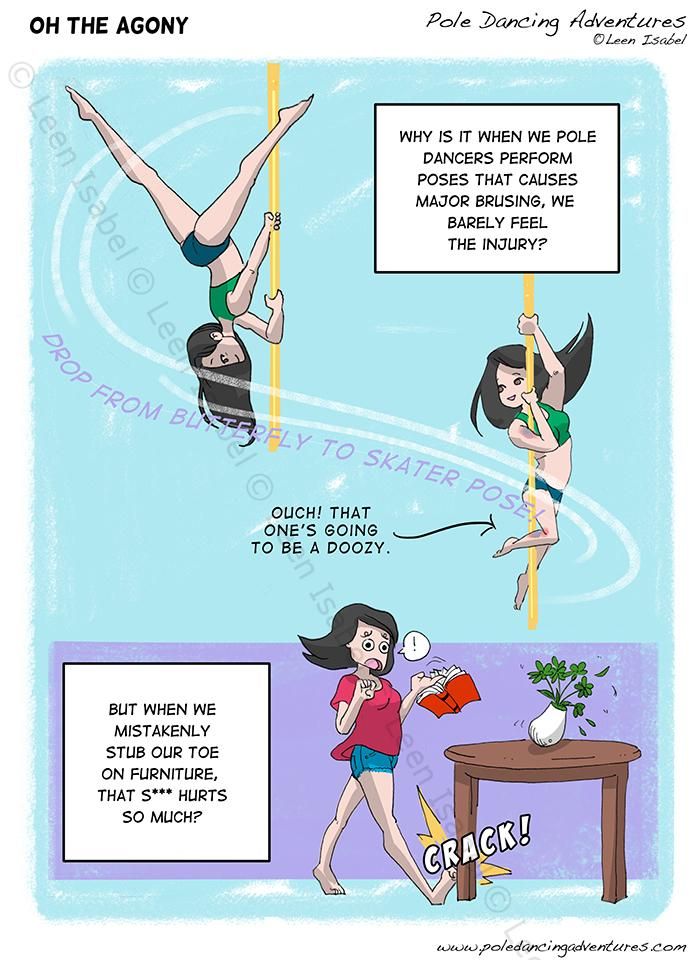 As a rule, it takes from three to six lessons to practice the dance, and from two to four, depending on the complexity, to practice the dance.
As a rule, it takes from three to six lessons to practice the dance, and from two to four, depending on the complexity, to practice the dance.
/stretching/
How I Became a Stretching Instructor
In a semi-sport, the lesson is different: the trainer explains and shows the trick that needs to be mastered and done. Up to two people can practice on one pylon. If more, the students are already uncomfortable: they will not have time to fix the element. nine0003
Periodically repeat old tricks or spins. This shows progress well: you can compare how the element was done before and how it is done now. If the student already knows several tricks, the coach comes up with combinations - when you go from one element to another.
Learning goes from simple to complex. For example, in the beginning there will be simple elements like a “barrel” - they are needed so that the student gets used to the grip with his hands and steps over the fear that he will fall from the pole.
At the first lesson, it seems that you are not holding on and constantly slipping, this is normal. Then the hands get used to it, stop sweating, there is strength in the muscles and self-confidence. nine0003
For half-sports, there is an example program for students to learn tricks. Of course, everyone goes at their own pace, but after a month or two you need to be able to do the simplest grips, for example, hanging on the far and near leg, on the elbows.
Beginner's version of twist - "barrel". Source: body-bar.ru Hanging on the far leg is already more difficultEvery studio must have safety mats: you learn to perform complex tricks only with them. But beginners are also offered to take a mat so as not to get injured. nine0003
There is always alcohol or vodka and a rag in the studio - this is necessary to degrease the pylons, otherwise there will be no adhesion. Students can also use talcum powder or powder that dries out their hands or feet so they don't slip on or roll off the pole.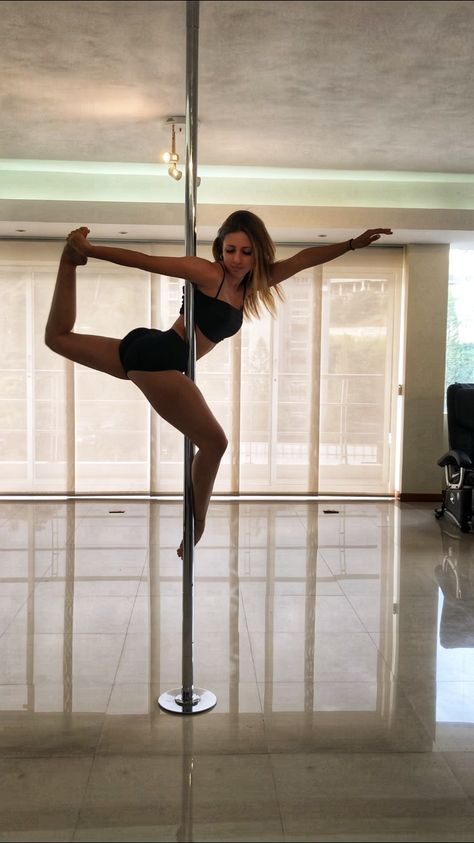 There are also other means for this, such as magnesia.
There are also other means for this, such as magnesia.
I don't recommend using talcum powder or anything else, otherwise your hands and feet won't get used to the grip - it's better to learn how to hold on right away without traction aids. Moreover, it is forbidden to use them at half-dance competitions. nine0003
Cooldown may vary between dance studios. Usually, after the dance part of the exotic, there is a slight stretch, and in half-dance they finish off the muscles: they pump the press, sometimes with a pylon, do push-ups, stand in the plank.
How are performances and pole dance competitions
Reporting concerts. Each studio holds reporting concerts, in which everyone can participate. Coaches prepare group numbers - not only dance, but also stunts, as well as solo performances when a person performs alone. nine0003
As a rule, they start preparing for the reporter in advance - several months in advance. Sometimes concerts are held not in the studio, but in a cafe, restaurant, or even in the Palace of Culture.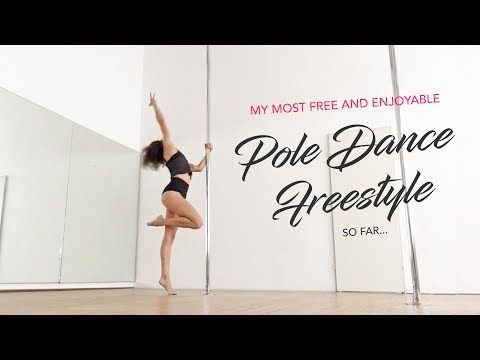 These are bright events in the life of students - their relatives and friends come to support them, and the dancers receive applause and a sense of the stage.
These are bright events in the life of students - their relatives and friends come to support them, and the dancers receive applause and a sense of the stage.
Competitions. They are held in all directions of half-dance.
In half-sport, you need to show combinations of tricks that are included in the mandatory program. They must be performed on two pylons: static and rotating. There must be a dance part, but it rather fills in the gaps between the tricks. nine0003
Participants usually qualify for local city competitions or video selection. Competitions are easy to find: you can simply google or search for groups of competitions in social networks. The coaches themselves also follow the latest information and invite students to participate. Anyone can apply for the competition.
/spravka-dlya-sorevnovaniy/
How to apply for a certificate for participation in competitions
There are several categories: beginners, intermediate level, pros, children, duets, group performances.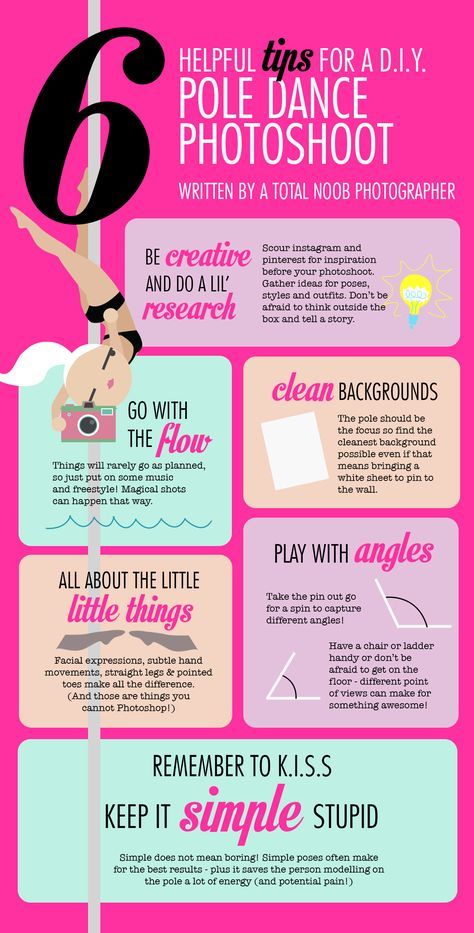 Well-known coaches and dancers are invited to the jury. All participants receive certificates or diplomas for participation, and the winners receive medals and prizes. nine0003
Well-known coaches and dancers are invited to the jury. All participants receive certificates or diplomas for participation, and the winners receive medals and prizes. nine0003
In exotic there is no obligatory condition to dance with two poles, the dancer can choose the pole mode independently. But you can only perform in strips - the jury evaluates how well the dancer knows how to use shoes. There are also categories here, and sometimes participants are divided into areas: old school, flow and hard.
As part of the competition, invited jury members often give master classes and hold demonstration performances.
Preparation for the competition takes at least three months. With pole-sports, the most difficult thing is to wait until the pole-dance organization hosting the competition releases a list of required elements, and then choose the required number of them. Each element is worth a certain point. Therefore, the dancer collects the maximum number of points from the elements that he can do.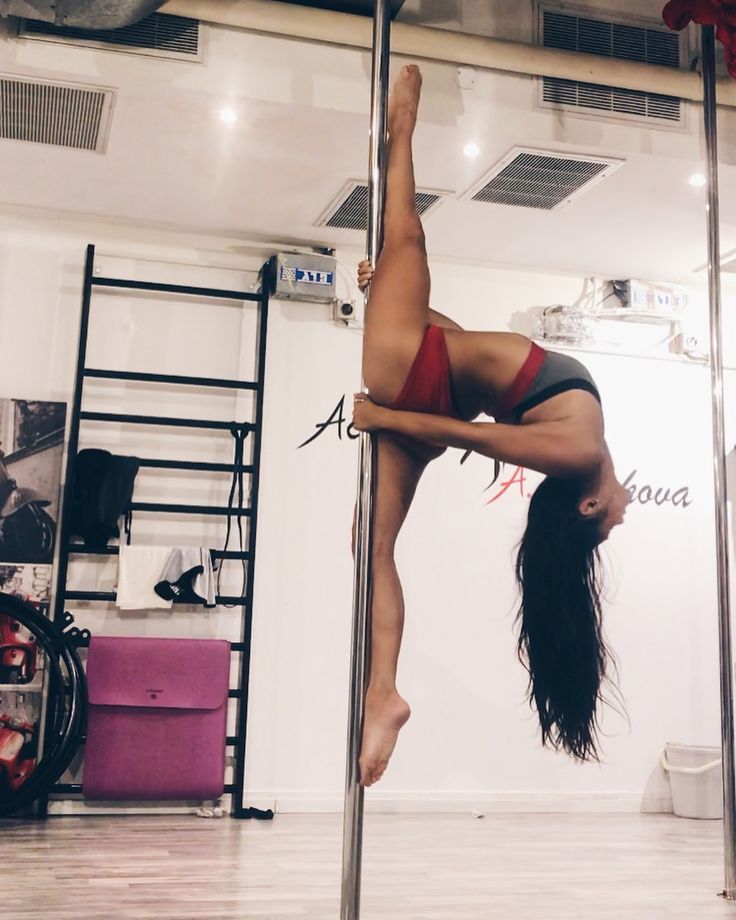 nine0003
nine0003
In addition, you must perform all the tricks according to the requirements: hold out for a specific number of seconds, enter and exit the element correctly, observe lines or angles. If the participant fell, did not get the trick right the first time, slightly slipped from the desired position along the pylon, or did not hold out for the required number of seconds, he receives a penalty.
The jury also evaluates the choreography, artistry, image, presentation. For example, you can’t sing along during a performance or look at the floor. If something went wrong and the participant left the stage during the performance, his candidacy is removed. nine0003
Competitors in semi-sports have strict appearance requirements: a swimsuit or shorts must be of a specific length, hair must be tied up, make-up is not bright. If a participant has underwear visible, he receives a fine for this.
Such stringent requirements are due to the fact that half-sport federations have been fighting for a long time to be included in the list of Olympic sports - and in 2021 it happened.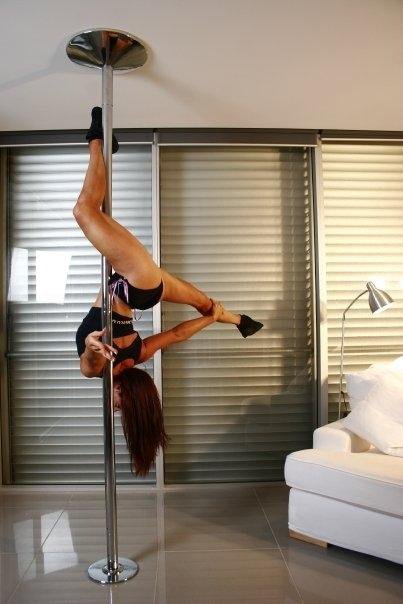
Exotic competition rules are not so strict, preparation for them is easier. But even here there are requirements: to do a certain number of tricks in conjunction, to follow the rhythm of the music, to include choreography and acrobatics in the stalls. nine0003
What you need for pole dance
Patience. The main thing is the desire and understanding that everything will not work out right away. Any coach also once slid down from a pole, could not climb a pylon and was afraid to hang on one leg upside down.
Clothing. For training, you need to take short shorts, a top or T-shirt, socks for warm-up and cool-down. Tricks in semi-sports are performed barefoot, and in exotics - in special shoes.
/sportstat/
What sports do Russians do
The more revealing the clothes, the better: you need a good grip on the pole, which comes at the expense of the skin.
Shoes.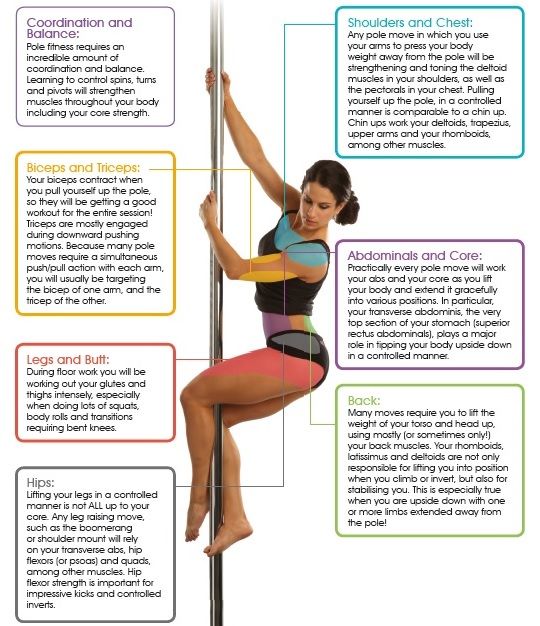 Exotic needs shoes - strips. It is not necessary to buy them right away, but you need to bring at least high heels with you. Sometimes in studios they are not allowed to dance in ordinary sandals, as they scratch the parquet. Or they ask you to seal the heel with adhesive tape - this can be found out in advance when signing up for classes.
Exotic needs shoes - strips. It is not necessary to buy them right away, but you need to bring at least high heels with you. Sometimes in studios they are not allowed to dance in ordinary sandals, as they scratch the parquet. Or they ask you to seal the heel with adhesive tape - this can be found out in advance when signing up for classes.
Strips vary in height: from one, which has a heel height of 15 cm, platforms - 5 cm, to five, which has a heel height of 25 cm, platforms - 15 cm. There are sandals, boots and even over the knee boots. nine0003
Beginners should start with ones. In the classes, you will not only have to learn how to stand and move on them, but also work out the elements on the bevels, that is, on the tips of the platform.
Knee pads. They are needed for exotic. There are many elements that must be performed while kneeling at the pylon. There are also tricks with jumping on your knees - here knee pads help soften the blows.
Bruise remedies. It is better to take care of possible bruises in advance - they can be in the most unexpected places. But this is temporary - as a rule, after two or three months, bruising is no longer a concern. Even at first, calluses may appear on the hands due to practicing the grip. Later, the skin will get used to it, and this problem will go away. nine0003
For accelerated healing of bruises, you can use ointments with heparin, and for the treatment of corns - a moisturizer and cream with urea in the composition.
Form for classes. Source: pilonia.ru This is what exotic strips look like. Source: pdmarket.netWho shouldn't practice half-dance
People with severe chronic diseases, in particular, diseases of the heart, lungs, nervous system, kidneys, diabetes mellitus, should not practice half-dance. That is, for those for whom any intense physical activity and leg injuries can be dangerous. nine0003
When to consult a doctor before exercising - Mayo Clinic
In addition, classes may be contraindicated for people who have diseases of the spine and joints when they should not be overloaded, or severe skin diseases that may interfere with pole training or be aggravated by friction.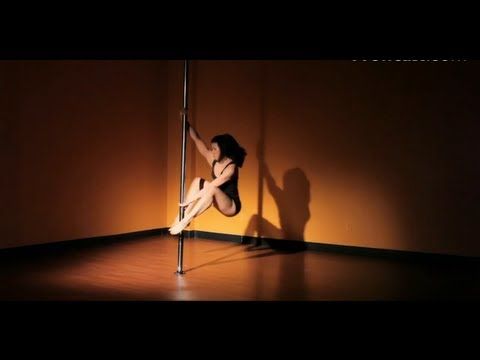
This sport is also not suitable for pregnant women, as during the performance of tricks you can fall or hit your stomach.
/sport-pregnancy/
How to stay fit and healthy during pregnancy
In other situations, everything is decided individually. I have low blood pressure and problems with the vestibular apparatus, but I have been doing pole sports for six years. In any case, you first need to consult a doctor, explain what the loads will be, so that he gives permission for classes. Usually, studios do not require a doctor's certificate, but I recommend that you insure yourself and take care of your health on your own. nine0003
Safety precautions for half-dance classes
Half-dance classes are classified as traumatic, so safety precautions must be observed. Each studio introduces the student to the signature requirements.
Leather. On the day of class, you can not use cream, lotion or body oil, go to the solarium or sunbathe - in this case, suntan creams or sunscreens are also applied. Any substances on the skin impair grip on the pole and increase the risk of slipping off the pole. nine0003
Any substances on the skin impair grip on the pole and increase the risk of slipping off the pole. nine0003
5 frequent injuries during solo sports
Jewelry. They must be left at home - they will interfere. For safety reasons, the coach must ask to remove all rings, earrings, beads, chains, bracelets, sharp hairpins and piercings.
Hairstyle. For semi-sports, it is better to collect hair, as it will interfere, and can also get tangled behind the pole.
For example, at one performance, my student's hair got caught in the bottom of the pole. Since she was twisting upside down, her hair was wound and caught. She was not injured, but she had to hang upside down while we pulled her hair out. nine0003
But on exotics, hair is usually left loose, because it is used for dancing: they twist or wave their heads, playfully throw their hair back with their hands.
Food. The last meal should be approximately two hours before training. Otherwise, twists on the pylon can make you feel sick.
Otherwise, twists on the pylon can make you feel sick.
Behavior in class. You can start training only after a warm-up, perform elements on mats and with a coach's insurance. You can’t jump off the pylon, if it’s not provided for by the trick, it’s unacceptable to relax the holding muscles - you can slide off the pylon, dropping onto your shoulders or forearms. nine0003
When performing tricks, it is important to keep a distance between yourself and other participants. In exotic classes, you need to work out the trick first with bare feet, and only then in strips.
What kind of injuries can you get during half-dance lessons?
Half-dance lessons require attention and concentration. There were cases when the dancers spun strongly, flew off the pylon and got a fracture. Sometimes equipment failed: it was not installed securely enough or poorly secured. nine0003
The most common and minor injuries that you can get in class are bruises or abrasions from hooks and hangs.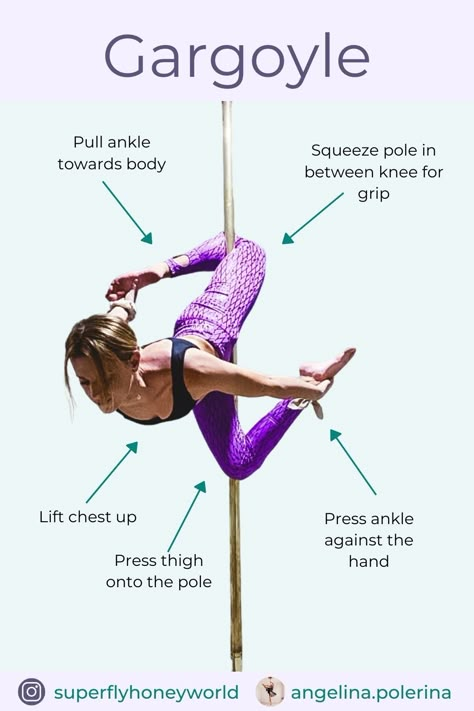 At the beginning of training, until the skin is used to it, they will occur much more often. I have sensitive skin, so even after a few years, bruising periodically appeared.
At the beginning of training, until the skin is used to it, they will occur much more often. I have sensitive skin, so even after a few years, bruising periodically appeared.
/list/sports-health/
12 important questions for sports doctor Artem Ryzhenko
There is a high load on the joints and ligaments during the classes. For example, when performing some elements, the arms should be straight - in fact, the emphasis is on the wrist. If this causes discomfort, wristbands or elastic bandages can be used. nine0003
Six years later, I had a problem with the wrist of my left supporting hand - I always focused on it for racks and other elements.
It is very important to control your feelings: there should be no pain. If something hurts after completing the element, you need to rest. If the situation persists, you should consult a doctor.
And if a sprain or other minor injury occurs during the session, the training must be temporarily stopped.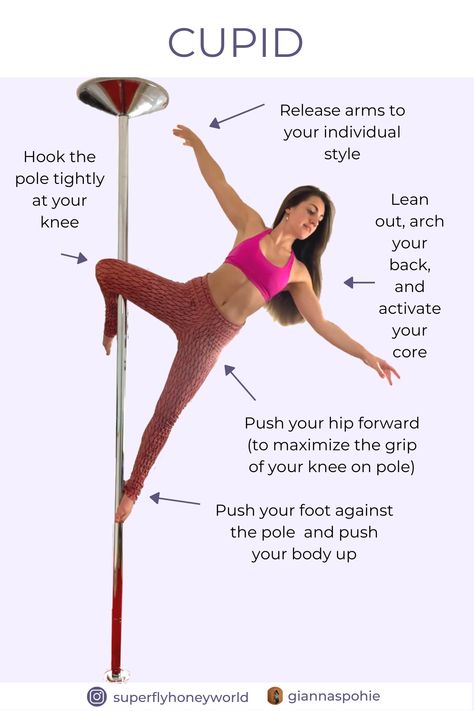 Until the body recovers, loading on the pylon is prohibited. nine0003
Until the body recovers, loading on the pylon is prohibited. nine0003
To avoid a fracture, it is important to follow safety precautions. The main thing is to never do tricks without mats and not let go of your arms and legs if the clutch has not happened. When it is clear that you are not holding on to the pole upside down, you need to tilt your head to your chest and slide down the pole to the floor on your shoulders. You should never tilt your head back to your back, so as not to fall in this position and injure your neck.
How to choose a pole dance school and coach
Equipment. It is necessary to check if there are mats and ask how the poles are fixed, what company the pylons are installed. The highest quality ones are from Pole4You. Your health and life depend on it. nine0003
Teacher training. It is important whether the studio coaches have certificates confirming the right to teach half-dance. Otherwise, they may not properly apply the load, causing injury.
/list/dance-schools/
From waltz to bachata: where they will learn to dance in Moscow
It is necessary that the coach learn the methods of teaching half-dance, go through theory and practice, pass tests and exams. Training cannot be less than 96 hours, because otherwise you cannot master the program. nine0003
Certificates are issued by half-dance studios with titled teachers and extensive experience. Typically, such organizations belong to a pol-dance federation or represent it themselves.
Competitions. It is important what competitions teachers and students of the studio take part in and how often: if the school is active in the outside world, then it will be more interesting to study there.
Number of students per pylon. There should not be too many students in groups - a maximum of two people per pylon. Otherwise, there will be no time to practice tricks. nine0003
First conversation with the trainer. The teacher needs to know about the physical condition, diseases and contraindications. You must be told what you can and cannot do in class, and you must sign an agreement with the safety rules.
The teacher needs to know about the physical condition, diseases and contraindications. You must be told what you can and cannot do in class, and you must sign an agreement with the safety rules.
Communication with the trainer. It depends on him what mood the student is in, how he progresses, what results he achieves. You should be comfortable with the coach. If this is not the case, you need to change the coach, otherwise effective training will not work. nine0003
Coach qualification. He must have completed half-dance courses. It is also worth asking about experience: how many years he has been teaching, what successes his students have. It is good if in the past the coach was involved in professional sports or dancing, usually in this case the quality of teaching is higher.
It is also important how clearly the coach explains the technique of performing tricks and how he monitors safety: does he insure each student, does he require the use of a mat. nine0003
nine0003
How much does it cost to do half-dance
Regular lessons. Usually dance studios offer several subscriptions to choose from: 8, 12, 16 group lessons. It makes no sense to go to training less than twice a week, that is, you need at least eight classes a month.
To practice semi-sports, you will need to spend money on a uniform and a subscription. Exotic half-dance requires a lot of money: you will also have to buy special shoes and knee pads. Then you will only need to pay for a subscription to the studio and change clothes and shoes as they wear out. nine0003
/list/hochu-mogu/
8 extreme hobbies that cost people a lot of money
Half-sport classes in the first month cost from 6500 R
| Subscription for 8 lessons | 2500-5000 R |
| Shape: top and shorts | 3500 R |
| Socks | 500 R |
Subscription for 8 lessons
2500-5000 Р
Form: top and shorts
3500 R
Socks
500 R
Semi-exotic classes in the first month cost from 13 000 R
| Strips | 5000 R |
| Subscription for 8 lessons | 2500-5000 R |
| Shape: top and shorts | 3500 R |
| Knee pads | 2000 R |
Strips
5000 R
Subscription for 8 lessons
2500-5000 R
Uniform: top and shorts
3500 R
Knee pads
2000 R
Participation in competition costs - 9018 For example, the participation fee starts from 1000 R. You also need to sew or buy a special suit - this is at least 3000 R. New strips for competitions are usually not bought. The dancer gets used to those in which he trains, in new ones there is a higher risk of falling.
You also need to sew or buy a special suit - this is at least 3000 R. New strips for competitions are usually not bought. The dancer gets used to those in which he trains, in new ones there is a higher risk of falling.
You also need to pay for individual lessons with a trainer to work out the number and rent the studio hall for independent training - they are needed to consolidate the result. nine0003
A personal lesson with a trainer costs an average of 1500 R, but its price can reach up to 3000 R. The number of lessons depends on the competitions themselves, the level of training, the complexity of the number. The minimum number of trainings for setting a number is four. Renting a studio for self-training will cost about 5,000 R for 10 times.
Preparation for pole dance competitions will cost about 15,000 R
| 4 personal lessons with a trainer | nine0067 6000 Р|
| Room rental for 10 self-study | 5000 R |
| Special suit | 3000 R |
| Participation fee | 1000 R |
4 Personal classes with a coach
6000 R
Renting of the hall for 10 independent classes
5000 R
Special costume
9000 3000 3000 RFund for participation
1000 R
Remember
- Pole dance is a pole dance that combines elements of choreography, gymnastics and acrobatics.

- All directions of half-dance are intertwined with each other. You can't dance without tricks or choreography.
- One session actually replaces a circuit training, where exercises for different muscle groups are repeated several times - the same number of calories can be spent. In addition, classes on the pole train the skill of controlling the whole body. nine0036
- You can practice from scratch without any preparation. Usually, students are divided into groups of beginners and those who have been studying for a long time.
- At the beginning of each workout, a mandatory warm-up, and after it - stretching or exercises without a pole.
- To start doing semi-sports, you only need a uniform, and for exotic you also need special shoes and knee pads.
- Training is contraindicated for people with severe chronic diseases and pregnant women.
- Pole dance is classified as a traumatic sport, so it is important to follow the safety precautions that you should be introduced to in the studio.
 nine0036
nine0036 - When choosing, you should pay attention to the quality of equipment in the studio, the qualifications of the coach and comfort while communicating with him.
Health news, interviews with doctors and instructions for patients in our telegram channel. Subscribe to keep abreast of what is happening: @t_zdorov.
"Other dances" in Kazan: a girl with a pole and... no sex
The Volga region championship in pole dancing (steel pole) "Other dances" was held yesterday in Kazan for the first time. Almost fifty dancers took part in it - beginners who have just begun to master the art of performing acrobatic tricks on a pole, amateurs who have already achieved certain results, and professionals who themselves can teach anyone to spin beautifully on a pole. nine0018
The passion for pole dancing, or pole dance, in Kazan in particular and in Russia in general, is now experiencing a real boom: girls sign up in batches for classes that combine acrobatics and dance art. Fortunately, any self-respecting fitness center and dance studio are ready to offer their students and students (yes, men also do half-dance) the opportunity to try themselves as pole tamers.
Fortunately, any self-respecting fitness center and dance studio are ready to offer their students and students (yes, men also do half-dance) the opportunity to try themselves as pole tamers.
However, only a few out of dozens of beginners reach a high level of pole virtuosity, because somewhere in the second or third lesson, beginners begin to understand that acrobatic pole dance has practically nothing to do with striptease and is more of a sport than sensual dances. Moreover, in half-dance it is not customary to demonstrate sexuality - slapping your buttocks, taking erotic positions or gently stroking a metal pole. And the minimum of clothes on the dancers, who perform in tight-fitting shorts and tops, is not necessary at all in order to inflame the audience in the hall, but in order to ensure maximum skin contact with the pole when performing acrobatic exercises. The rules of the championship even specifically spell out a ban on too revealing outfits: girls should have their chests and other intimate areas closed, men should also not resemble strippers. nine0003
nine0003
Half-dance is a young phenomenon in Russia. This peculiar kind of fitness appeared about five years ago, while in the world "pylon fever" has been raging for twenty years. But in our country, pole dancing has already managed to give rise to an entire industry that supplies dancers with clothes, shoes, accessories and, of course, a variety of poles.
And where there is a community of interests, the desire "to show oneself and look at others" necessarily appears. Half-dance competitions have already been held in Kazan, but on a local scale. This year, dancers from Perm, Samara, Yekaterinburg, Ufa came to the Other Dances Championship at Saidash Cultural Center... But the largest delegations, of course, were from Kazan and Naberezhnye Chelny. Well, the fact that the number of participants was not so large, so you need to understand that this kind of championships are held solely on the initiative of enthusiasts and dancers compete not for diplomas or prizes, but to get an assessment of already proven half-dance stars.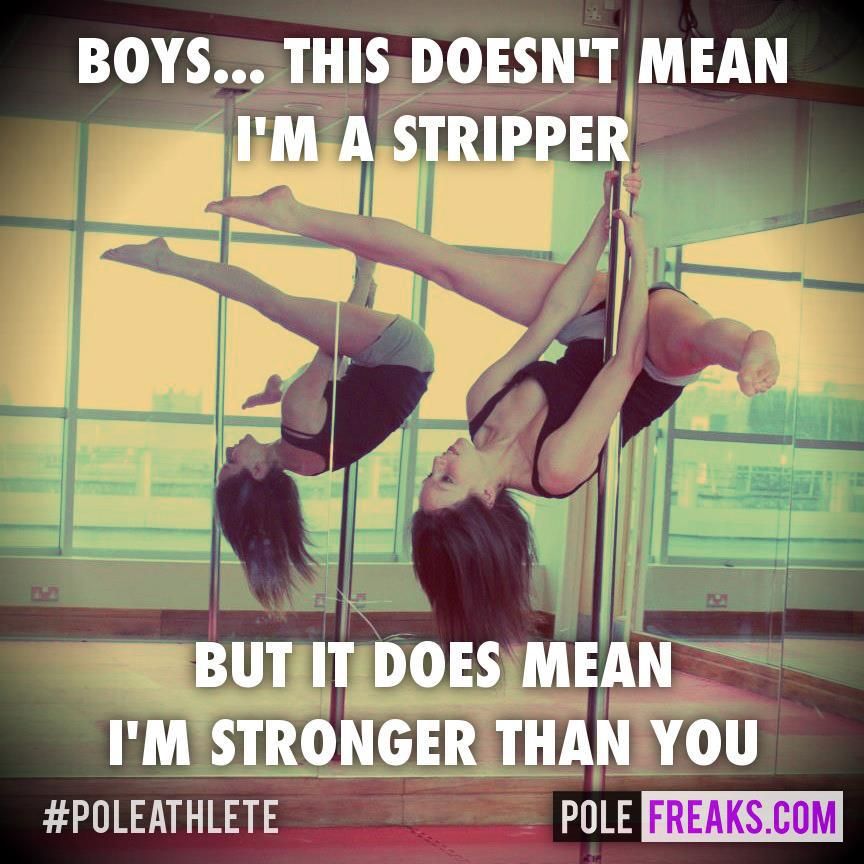 nine0003
nine0003
Two professional pylons were installed on the stage for the participants at once - one static, that is, not rotating, the other dynamic, so that the participants of the competition could demonstrate their maximum capabilities. It turned out that the dancer can perform tricks not only on a pole, but also on the floor. The more original the choreography of the dance and the costume of the dancer, the more chances he has to win.
That's how the participants tried: someone portrayed a mermaid with a long green tail, someone - a drunken bride in a veil. It turned out that patriotism is not alien to half-dancers: the Kazan participant took the stage in a bright green and red suit and performed the number “Flower of Tatarstan” to a musical composition with a characteristic Tatar pentatonic scale. nine0003
A dancer from Kazan decided to surprise everyone and went to the poles with a stone around his neck and a black bag on his head, his number was called accordingly - "Execution".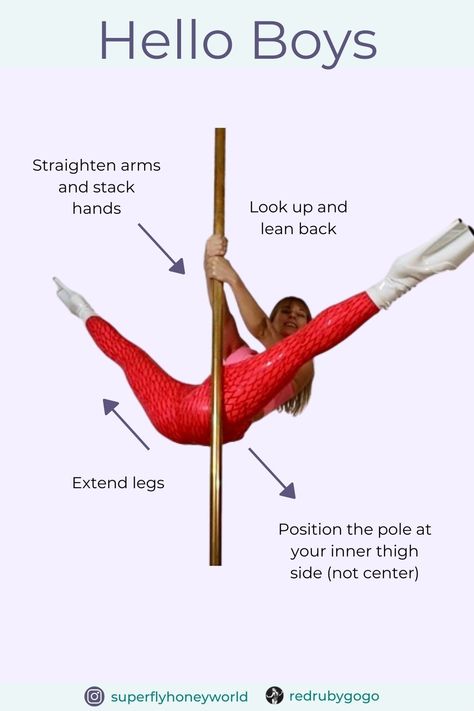 However, the young man overdid it with the bag: either from excitement or from lack of air, the half-dancer fainted right next to the pylon. Moreover, in the first seconds, no one even realized that the dancer had become ill - everyone thought that this was part of a spectacular dance.
However, the young man overdid it with the bag: either from excitement or from lack of air, the half-dancer fainted right next to the pylon. Moreover, in the first seconds, no one even realized that the dancer had become ill - everyone thought that this was part of a spectacular dance.
Frankly speaking, it was not very interesting to watch the performances of beginners and even amateurs who had already reached a certain skill. Among this category of participants, only those who, before their passion for half-dance, already had sports or dance training, looked more or less organically at the pole. The rest wanted to give a prize only for courage. Another thing is the half-dance professionals, whose performances were breathtaking. Here, even to an inexperienced spectator, it became clear that the pole was not a joke for you, but a serious sports equipment. nine0003
Since not so many dancers participated in the competition, and there were seven nominations, and in each of them the first-second-third place was awarded, almost every dancer got at least a small, but encouragement.